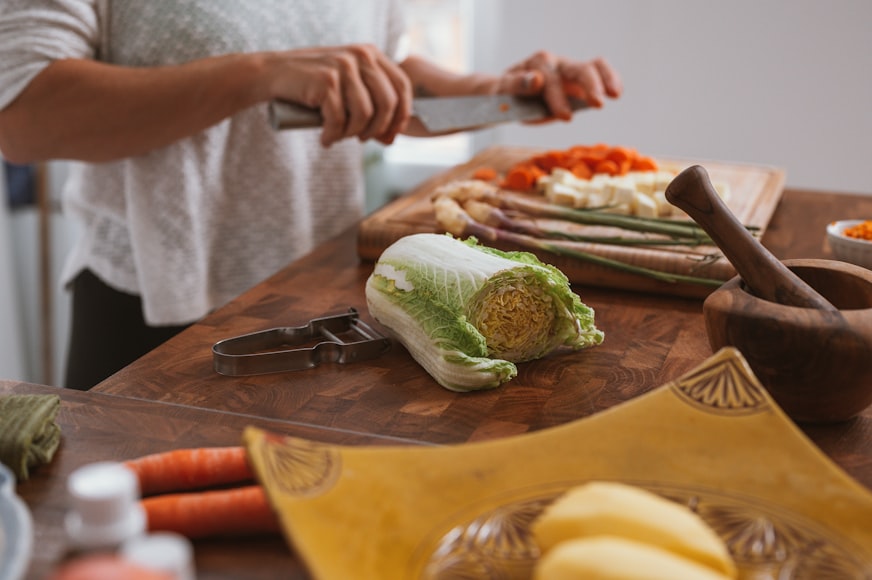The kitchen is the most dangerous room in your home. From cutting and scalding injuries to house fires and slip-and-fall injuries, there are plenty of ways to get hurt while cooking. Fortunately, it’s also easy to make your kitchen a safer place.
Range Hoods
Carbon monoxide gas is a toxic gas that is undetectable to humans- it cannot be smelled, seen, or felt. It is produced by incompletely burning fuels such as natural gas, wood, and propane. The gas causes flu-like symptoms such as nausea, headaches, and tiredness. Because small concentrations of the gas can take longer to build up to the level of having symptoms, and it can take hours to wear off once the gas is removed, people often don’t realize what is happening.
Carbon monoxide can be produced at dangerous levels from cooking stoves and ovens. The best way to ensure safety from this and other poisonous gases in the kitchen is to install a range hood that vents outside of the home. High-end range hoods, such as CopperSmith hoods, make a big difference in reducing indoor air pollutants in your home. They are also a very attractive and beautiful addition to your kitchen.
Fire Prevention
Nearly half of all home fires in the US started in the kitchen. It is the most common place for fires to begin, and you are more likely to be injured in a fire started in the kitchen than in a different location. The number-one way to prevent kitchen fires is by not leaving food unattended on the stovetop. Half of the deaths caused by cooking fires resulted from cooking food that was left unattended.
You should also have a fire extinguisher in your kitchen. The extinguisher should be one that is rated for use on oils and grease, and it should be mounted correctly and in an easy-to-access area. Everyone in your family should know how to use it. Consider having frequent training on how to put out kitchen fires.
Of course, every kitchen should also have a properly installed and tested smoke alarm. This is usually installed inside or just outside of the kitchen.
GFCI Breakers
The outlets in your kitchen, and any other area with frequent water exposure, should be connected to a ground fault circuit interrupter, or GFCI outlet. These outlets are easy to recognize, as they have two small buttons on them. The outlets have sensitive breakers that trip and stop the electric flow when there is an excessive surge.
Because they are located on a local circuit, rather than in your house’s breaker box, GFCI outlets trip much faster than your main breakers. They are designed to protect human life, rather than your home’s electrical system. Since GFCI requirements were implemented, the number of people electrocuted in homes each year has dropped from 800 to 200. It would be even higher if all homes had the technology rather than only newer or remodeled homes.
Water Temperature
To prevent scalds, you should avoid setting your water heater temperature too high. Interestingly, you should also avoid setting the temperature too low as you can encourage bacteria to develop. Most experts say that the water at your faucet should not be more than 120 degrees to avoid burns. However, others recommend setting water heaters at 140 degrees because that is the temperature that will keep harmful bacteria from forming and growing in your water.
For most people, it is safer and cheaper to set the temperature at 120 degrees. Children can get a burn from 140-degree water in only 5 seconds. This will also lower your energy bill. If you have family members with compromised immune systems who might be susceptible to diseases from water, set your water heater at 140 degrees and purchase water mixing temperature controls for all of your faucets that will not allow the water to come out at full temperature.
Slip-Resistant Flooring
Make sure your tile or other flooring isn’t too slippery when it is wet. Many flooring options are created to be beautiful and slip-resistant, so there’s no reason to take a risk. If you have slippery flooring, consider installing slip-resistant mats that will help protect you from falls.
Know Basic Safety Rules and Techniques
Knowing how to be safe in the kitchen, and teaching your children safety rules, will dramatically reduce your chances of injury. Your children should be taught how to properly handle knives and they should only use them under supervision until they demonstrate their skills. They should know how to handle hot stoves and pans, and how to use the oven safely. Remember, children are smaller and may not be able to safely place things inside a hot oven or carry pots of hot liquids. They should also be trained in how to respond to a kitchen fire and how to react without panicking. Some basic kitchen safety rules:
- Know basic knife safety
- Don’t lift heavy, hot items out of an overhead microwave
- Never put water on a kitchen fire
- Learn how to use the fire extinguisher
- Don’t walk on wet floors
- Never, ever leave cooking food unattended
- Use the range hood fan while cooking or using the oven
- Do not leave young children unattended in the kitchen

